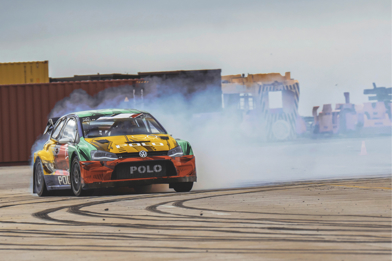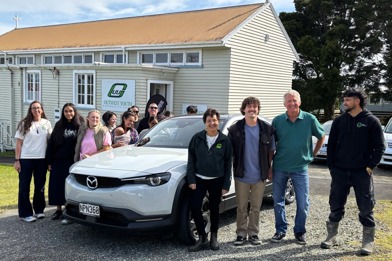Racing cars with roofs were always an anathema to me.
They were what my friends and I did, mainly with Minis and bangers, I must admit, and the real racing cars were open wheel, open cockpit, single-seat things.
Formula 1 cars to be precise but the McLaren Can-Am cars ran a close second.
Along came Pedro and Ricardo Rodriguez, the brothers who not only raced-single seat Formula cars but went on to race mighty sports cars for Ferrari and Porsche during the early 1960s, with roofs and closed wheels.
Pedro and Ricardo Rodriguez, winners of the 1960 24 heures du Mans. Picture / Getty Images
They captured not only my imagination but that of millions of others as these loud, incredibly powerful machines were wrestled with a grace that belied the difficulty of driving them.
The brothers were Mexican and had a Latino air of bravery, talent, brooding good looks and an air of mystery. To cap it all they were fast, extremely fast.
Perhaps it was the skinny (then) "wannabe" kid in me but the cars, with the Rodriguez brothers driving them, inspired in me something that I feel to this day, a love of exciting close racing and the simple thrill of being involved.
Photo / Getty Images
The experience of watching Pedro driving the Porsche 4.5 litre flat-12 engined 917K, one of the most iconic sports cars in history, in the wet, to win at Brands Hatch in the UK is the stuff of legend.
Sadly, Ricardo died in 1962 aged just 20 and elder brother Pedro in 1971, aged 31, in motor racing accidents.
A young Jo Ramirez travelled to Europe with his friend Ricardo and I am fortunate to have Jo as a good friend today. When we were colleagues at McLaren he told me endless stories about the brothers.
None of those dimmed my memories or dulled the romanticism.
Of course there was always Nascar, but that series lost a bit of its shine when it went to a "stock" design of car to replace the individual "muscle cars" of the 1960s. Nobody who witnessed it can forget those two artists, Jim Clark and John Whitmore, in their Lotus Cortinas managing to get the front left wheel to wave enthusiastically to the crowd as they rounded the classic "South Bank bend" at Brands Hatch.
Open-wheel, open-cockpit racing is still the purest form of racing car for me, with the best example of that in Australasia being the Toyota Racing Series, but I have formed a great appreciation of the Virgin Australia Supercars series.
Perhaps the definition of great racing is much in the eye of the beholder. However, if that definition depends on close competition, aggressive racing, talented and skilful drivers, an element of team inclusion with strategies and pit stops dependent on engineers and mechanics, noise, pure speed and a multitude of drivers capable of winning in a variety of different race formats, then the Supercar series has it all.
A bit of the occasional bash and crash doesn't hurt, either.
Many of the team personnel are ex-Formula 1 or European open-wheel racing. It is through them that I have gained an admiration for the complex and difficult nature of engineering these ultimate expressions of hairy-chested racing cars. I have to admit, I love the series.
There. Straight out of the closet. I have said it. I really do like the Virgin Australia Supercars series.
This past week, Auckland hosted the official launch of the ITM Auckland Supersprint event at Pukekohe on November 3-5. It is something I look forward to each year.
The crowd is spectacular in turnout and the racing, on a track that has seen far better days and is grossly unsuitable for the likes of the TRS, is rarely anything short of exciting.
The bumps and undulations -- which, according to Fabian Coulthard change a little bit every year -- and the kerbs and the character of the corners suit the heavy and rumbling V8s like no other series. It all adds to the reputation that Pukekohe has within the Supercars field as being one of the most challenging and enjoyable tracks on the calendar.
There is an added bonus of course, with Kiwi drivers taking the lion's share of the pole positions and wins in the series so far this season and the race format reverting to include refuelling.
The bottom line, however, is that there is no more exciting, nor competitive touring car series on any track anywhere in the world.
In driver Rick Kelly's words: "The very best racing you will see."
The Pukekohe round of the series is the biggest annual sporting event in this country and anyone who enjoys seeing the best of our up-and-coming talent driving in the Toyota 86 Championship cars or those Kiwi drivers at the top of their own tree in the Supercars field, well, you just have to be there.




